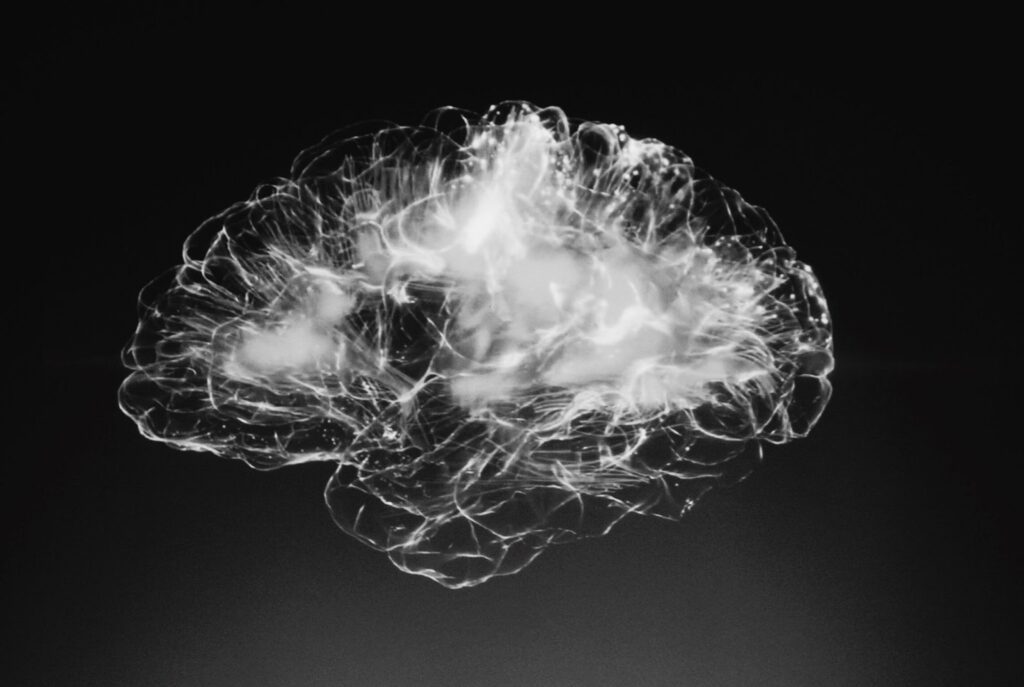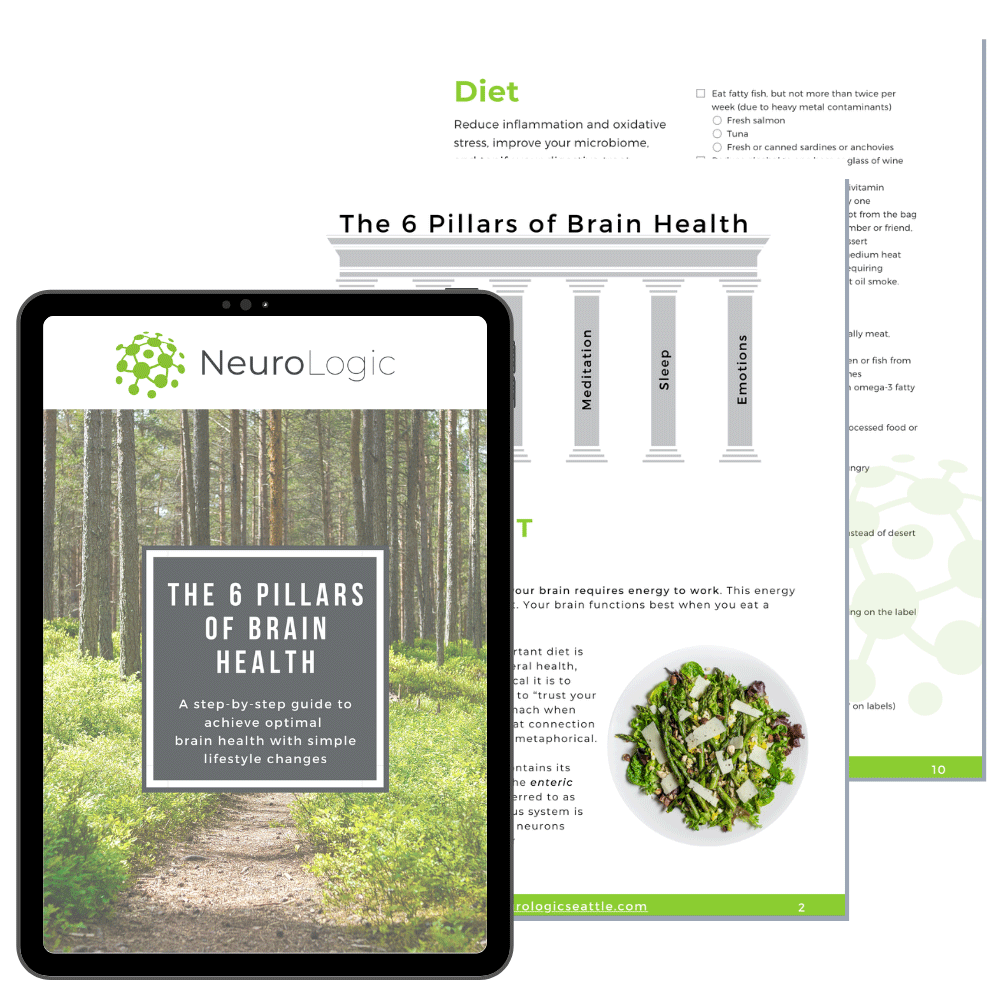Did you know that you have as many brain cells as there are stars in the Milky Way galaxy? It’s pretty amazing when you think about it.
The connections within this vast network of brain cells – and their ability to form new connections – is what makes our brains so powerful.
Neurofeedback is a gentle, non-invasive therapy that harnesses your brain’s ability to form new connections. It’s being used to improve conditions as diverse as ADHD, anxiety, brain injury, cognitive decline, and pain. But how does it work? Is it effective?
What Is Neuroplasticity?
The brain is by far the most complex organ in the human body. Weighing in at only 3 pounds, it’s responsible for intelligence, thought, emotion, sensation, movement, personality, and memory. The brain is also a mystery, confounding even neuroscientists with the complexities of its function.

“The study of the mind and brain is the last frontier in science. Although the field has made enormous progress over the past several decades, understanding of the basic principles of thought and brain function are still far more unknown than known.”
– Michael Tarr, Cowan Professor of Cognitive Neuroscience
While there’s still a lot to learn about the brain, the most exciting discovery of recent times has to do with the brain’s inherent plasticity. Neuroplasticity is the brain’s ability to re-wire itself and form new connections.
In fact, human growth and development wouldn’t be possible at all without neuroplasticity. Infants grow into adults through neuroplasticity. Survivors of strokes and brain injuries recover because of neuroplasticity.
When one neural network or pathway “goes down” because of injury or damage, the brain reroutes the signals to another pathway, forming a new connection. These new connections restore the function that was lost and help the brain continue to grow and change over time.
What Is Neurofeedback?
Neurofeedback uses the power of neuroplasticity to bring balance to the electromagnetic patterns in your brain. It uses real-time displays of brain activity to teach your brain more beneficial patterns. In this way, it helps your brain learn to regulate itself.
How Does Neurofeedback Work?
To understand how neurofeedback works, we have to take a step back and look at how our brain cells, or neurons, work.
Neural Pathway Formation
The brain is always communicating with the outside world. We’re born with billions of neural connections and the capacity to learn almost anything. As we grow, these connections are either reinforced or not reinforced.
For example, babies have the capacity to learn any language, but only those languages they’re exposed to get reinforced as neural pathways. That’s why language learning is so much harder as we get older.
The connections that are reinforced form strong neural pathways that serve as a constant source of information and regulation for us over time. The connections that aren’t reinforced are eventually lost in a process called pruning. In this way, the brain is constantly learning from the outside world, and growing and changing as a result.
The important thing to remember is that the brain always wants to repair itself, and it always wants to be more efficient and regulated.
Your Brain’s Electromagnetic Patterns
There are different types of neurofeedback, but they’re all designed to train your brain to create more regulated and efficient patterns – and less dysregulated patterns. In fact, certain brainwave patterns are actually associated with specific psychological disorders.
For example, you may feel like you’re just an anxious person. Your thoughts race and you find it nearly impossible to slow down your mind long enough to relax. It turns out we’re often able to see that specific pattern when we look at an EEG of your brainwaves.
While CT and MRI scans assess the structure of your brain, neurofeedback can assess the functioning of your brain, or how it’s working. The assessment identifies the electrical frequency or pattern that isn’t working properly or efficiently. Then, the system sends that frequency back to your brain, allowing it to “see” the inefficiencies and self-correct.
Sound confusing?
Imagine you’re trying to become a better public speaker. You might record yourself delivering a presentation and then watch your performance – looking for specific things that need to be improved. Seeing your own mistakes makes you more able to correct them. This is what neurofeedback does, except it accomplishes this “learning” in a matter of seconds or minutes.
Some people are born with specific areas of the brain that aren’t working properly. For most people, however, dysregulation happens through the course of everyday life through something we’re all pretty familiar with – stress.
How Chronic Stress Affects Your Brain
Stress is simply your brain’s response to a demand. Some stress is good. Getting married, starting a new job, or welcoming a child into the family are all exciting and pleasant events, even if they’re mildly stressful.
Other stress may not be pleasant, but is still necessary for survival, like the immediate rush of stress you feel to suddenly escape from danger. How harmful stress is to the body is ultimately determined by how intense it is and how long it lasts.
Chronic stress isn’t pleasant or beneficial to our survival – and it takes a tremendous toll on our brains over time. But it’s not the feelings of stress itself that harm our brains. Rather, it’s the biochemical processes that occur in our body as a response to chronic stress.
You’ve probably heard of the “fight, flight, or freeze” response. It’s the biological response that happens when you’re confronted with a stressful situation – your heart rate increases, your breathing speeds up, and you feel a rush of adrenaline. Then a really important hormone called cortisol is released. Cortisol helps give you back the energy you lost during the response.
The problem is that when stress is chronic, the body continues to make more cortisol than it can release. Cortisol builds up in the brain and eventually causes harmful effects, including:
- Reduction in the size of the brain
- Destruction of brain cells
- Disrupted communication between brain cells
Research has also shown that chronic stress and increased levels of cortisol create a domino effect – making you even more susceptible to chronic stress as time goes on. If you’re already stuck in this cycle, it can be difficult to get out of it.
While lifestyle factors like exercise, a healthy diet, and social connection are critical to healthy stress management, it’s often not enough. When your brain has been stuck in a cycle of chronic stress and dysregulation, you often need additional support to break the cycle and get unstuck.
Neurofeedback is a gentle, non-invasive method to restore balance and regulation to a dysregulated brain.
The Neurofeedback Process
The neurofeedback system we use at NeuroLogic is a passive system. Rather than requiring you to focus your attention on a specific task, you’re able to close your eyes and relax while the system does the work for you.
This is what happens during a neurofeedback treatment session at NeuroLogic:
- Your scalp is prepped with an exfoliant.
- Your practitioner attaches the electrodes to your scalp with conductive wax.
- The neurofeedback system is programmed with your individualized settings.
- You’re able to relax and rest your eyes during the treatment, which lasts a few seconds to a few minutes, depending on your protocol.
- New neural networks begin forming immediately.
- Your neural networks continue forming and re-organizing for 24-48 hours after treatment.
The entire treatment session only lasts for 30 minutes and sessions are once a week, making it easy to fit into a busy schedule. Since you’re only required to be still for a few seconds to a few minutes, this type of neurofeedback is especially ideal for children.
For a short video of how neurofeedback works, click here.
Research on Neurofeedback



“The literature suggests that EEG biofeedback therapy should play a major therapeutic role in many difficult areas. In my opinion, if any medication had demonstrated such a wide spectrum of efficacy, it would be universally accepted and widely used.”
– Frank Duffy, MD, Neurologist, Harvard Medical Professor, and Head of Neuroimaging at Boston Children’s Hospital
Neurofeedback has been shown to be beneficial for a wide variety of symptoms, including those associated with:
- ADHD
- Cognitive decline and brain fog
- Anxiety and related disorders
- Chronic pain
- Headaches and migraines
- Seizures
- Traumatic brain injury
- Depression
In fact, the American Academy of Pediatrics approved neurofeedback as a “level 1 best support” for childhood ADHD. More than 85% of our patients have benefited significantly from it and many see improvement in their symptoms after the first session.
What To Look For In A Neurofeedback Provider
There are many providers today who offer neurofeedback therapy. When choosing a provider, it’s important to look at several different factors:
- How many patients have they treated with neurofeedback?
- What is their rate of success at achieving symptom improvement?
- How many patients have they treated with your particular symptoms or condition?
- Do they have clinical certification to provide neurofeedback therapy?
- Is therapy individualized or one-size-fits-all?
- How many sessions are required, on average, to achieve symptom improvement?
- How much at-home work is required?
- How long must you (or your child) sit still during each session?
One thing that sets NeuroLogic apart from other neurofeedback practitioners is that our services are designed and managed by a licensed physician.
Dr. Wendling is a licensed naturopathic physician and a certified neurofeedback provider. This is a crucial factor to consider since brain health issues are complex and sometimes require a combination of therapies to achieve the desired results.
We can work with you to tailor a program specific to your needs. We also take a holistic approach that may include lab tests, lifestyle modifications, or counseling. You can find more answers to questions you may have about neurofeedback by visiting here.
If you’re looking for a safe, effective way to reduce anxiety, improve focus, reduce pain, recover from trauma, or improve symptoms of ADHD, neurofeedback is an excellent option. It can be used safely as a supplement to medication or as an alternative treatment – and it has no known negative side effects.
By training your brain into healthier patterns, you’re working toward building a better, more efficient brain, and the results will last a lifetime.
Curious about whether neurofeedback can improve your or your child’s symptoms? We’d love to talk with you. Reach out today for a complimentary 15-minute discovery call.
ALWAYS consult your physician before starting or changing any supplements or drugs.
*The above statements are for informational purposes only and are not to be construed as medical advice. Please consult your healthcare practitioner for diagnosis and treatment.
NeuroLogic DOES NOT recommend discontinuing use of any medications or supplements that have been prescribed to you – whether by your doctor, psychologist, or other provider – or changing any care that has been recommended to you.
1 https://www.cmu.edu/homepage/health/2010/summer/the-last-frontier.shtml
2 https://sitn.hms.harvard.edu/flash/2017/brain-training-future-psychiatric-treatment/
5 https://pediatrics.aappublications.org/content/133/3/483.long
6 http://www.ncbi.nlm.nih.gov/pmc/articles/PMC3373531/
7 http://www.tandfonline.com/doi/pdf/10.1300/J184v10n02_03#.U_VLQEgkPyc
8 https://www.jpain.org/article/S1526-5900%2809%2900090-X/abstract
9 https://pubmed.ncbi.nlm.nih.gov/16614940/
10 http://www.tandfonline.com/doi/full/10.1080/10874201003767163#.U_VRBkgkPyc
11 https://www.wbur.org/commonhealth/2011/07/29/neurofeedback-depression
12 http://bio-medical.com/media/blog/evidence-based-child-and-adolescent-psychosocial-interventions.pdf


